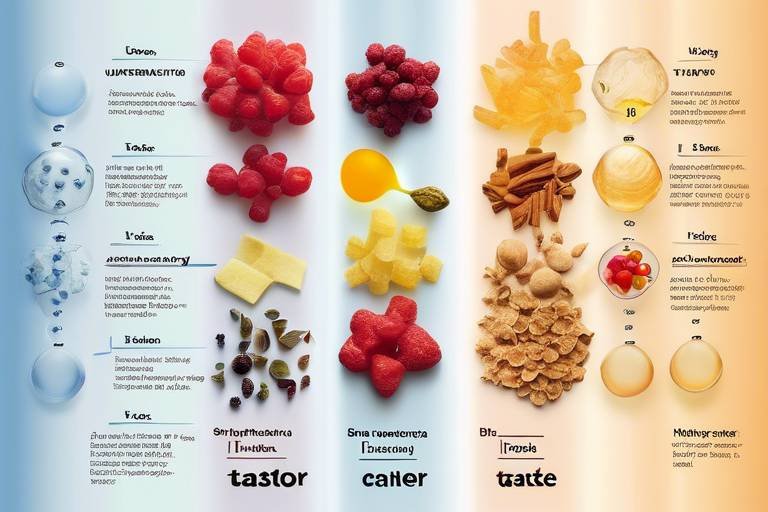The Physics of Kites - How They Fly
Kites have fascinated people for centuries, soaring high above our heads, dancing with the wind in a spectacular display of color and motion. But what makes these delightful creations take flight? The answer lies in the fundamental principles of physics, specifically the forces of lift, drag, and the critical role that wind plays in kite flying. In this article, we will unravel the mysteries of kite flight, exploring how these forces interact and what kite enthusiasts can do to enhance their flying experience.
Lift is the magical force that allows kites to rise into the sky, defying gravity and giving us those breathtaking moments of wonder. So, how does lift work? It all boils down to air pressure differences created by the shape of the kite. When a kite is launched, air flows over and under its surface, creating a difference in pressure. This pressure difference generates lift, allowing the kite to ascend. The design of the kite plays a crucial role in maximizing this lift. For instance, a well-angled kite with a broad surface area can catch more wind, enhancing its ability to rise. Think of it like a bird spreading its wings; the right shape and angle can mean the difference between soaring high and flopping down.
Without wind, kites would simply be colorful pieces of fabric on the ground. Wind is the lifeblood of kite flying, and understanding its dynamics can make or break your flying experience. The speed and direction of the wind are vital factors that influence how well a kite performs. For example, a light breeze may be perfect for smaller, more delicate kites, while larger kites may require stronger winds to stay aloft. The ideal conditions can vary significantly depending on the type of kite you’re flying. Here are some key points to consider:
- Light Wind: Best for small, lightweight kites.
- Moderate Wind: Suitable for most standard kites.
- Strong Wind: Ideal for larger, more robust kites, but can be challenging for beginners.
While lift helps kites ascend, drag is the force that opposes their motion, pulling them back down. Drag can be thought of as the kite's nemesis; it slows down the kite and can even cause it to crash if not managed properly. There are two main types of drag: parasitic drag (which occurs due to the kite's shape and surface area) and induced drag (which is a byproduct of lift). To improve performance, kite flyers often look for ways to reduce drag. This could involve streamlining the kite's design or adjusting its angle to minimize resistance as it cuts through the air.
The design of a kite is not just about aesthetics; it significantly influences its flight characteristics. Factors such as the shape, size, and materials used all contribute to the kite’s aerodynamics and stability in the air. For instance, a delta kite, with its triangular shape, is known for its ability to fly well in a variety of wind conditions. In contrast, box kites, with their three-dimensional structure, can harness wind more effectively, allowing for impressive altitude gains. Understanding these design elements can help kite enthusiasts choose the right kite for their flying conditions and preferences.
Not all kites are created equal; each type has unique flying characteristics that stem from its design. Here’s a quick overview of some common kite types and the physics behind their flight:
| Kite Type | Design Features | Best Conditions |
|---|---|---|
| Delta Kite | Triangular shape | Light to moderate winds |
| Box Kite | Three-dimensional structure | Moderate to strong winds |
| Stunt Kite | Dual-line control | Varied wind conditions |
The angle of attack is another crucial factor in kite flight, referring to the angle at which the kite meets the wind. Adjusting this angle can significantly impact lift and overall performance. A higher angle of attack can generate more lift, but if it’s too steep, it can lead to increased drag and potential stalling. Finding the optimal angle is a balance; it’s like tuning a musical instrument, where just the right adjustment can create harmony in the air.
Maintaining stability while flying a kite is essential for a successful experience. Factors such as the kite's design, weight distribution, and the skill of the flyer all contribute to stability. Techniques like adjusting the line tension or using tail weights can help control the kite's movement. Think of it like riding a bicycle; the more you practice, the better you become at balancing and steering your kite through the skies.
Even seasoned kite flyers can make mistakes that hinder performance. Some common errors include:
- Flying in too strong or too weak winds.
- Neglecting to check the kite's condition before flying.
- Improperly adjusting the angle of attack.
By being aware of these pitfalls and taking the time to prepare, kite enthusiasts can enjoy a more rewarding flying experience.
Q: What is the best wind speed for flying kites?
A: Generally, a wind speed of 5 to 15 mph is ideal for most kites, but it can vary based on the kite type.
Q: How do I choose the right kite for a beginner?
A: Look for a simple, lightweight kite that can handle a range of wind conditions, such as a delta kite.
Q: Can I fly a kite in any weather?
A: It’s best to avoid flying kites in stormy or extremely windy conditions, as it can be dangerous.

Understanding Lift
Lift is the magical force that allows kites to rise gracefully into the sky, and it all boils down to the fascinating interplay of air pressure. Imagine you're at the beach, feeling the wind whip through your hair as you hold onto your kite. What you might not realize is that the very air around you is working hard to keep that kite aloft. So, how does this work? Essentially, lift is generated when the air pressure beneath the kite is greater than the pressure above it. This difference creates an upward force that can make your kite dance among the clouds.
The shape of the kite plays a crucial role in maximizing this lift. Kites are typically designed with a curved top and a flatter bottom, which helps in creating this pressure difference. Think of it like a bird's wing; as air flows over the curved surface, it speeds up, resulting in lower pressure on top. This principle is known as Bernoulli's principle, and it’s the same reason why airplanes can soar through the skies. So, when you're choosing a kite, consider its shape—those sleek, aerodynamic designs will perform better than a boxy one!
Now, let’s dive a bit deeper into the types of lift. There are two main types: induced lift and dynamic lift. Induced lift is what we just discussed, where the shape of the kite and the air pressure differences create lift. Dynamic lift, on the other hand, occurs when a kite moves through the air at a certain speed. The faster the kite moves, the more lift it generates. This is why a gentle breeze can sometimes lift a kite effortlessly, while a strong gust might send it soaring like a rocket.
To visualize this, consider a simple table that outlines the key factors affecting lift:
| Factor | Description |
|---|---|
| Kite Shape | Aerodynamic designs maximize lift by creating pressure differences. |
| Wind Speed | Higher speeds increase lift, allowing for more dynamic flight. |
| Angle of Attack | The angle at which the kite meets the wind can optimize lift. |
Understanding lift is just the beginning of your kite-flying journey. As you experiment with different kite designs and flying conditions, you'll start to notice how these elements interact. Remember, the key to a successful flight lies in mastering the art of lift, and soon you'll be watching your kite soar higher than you ever thought possible. So, grab your kite, head outside, and let the wind show you the wonders of physics in action!

The Role of Wind
When it comes to flying a kite, wind is the lifeblood that keeps it soaring high above. Imagine trying to run with a parachute in still air; it just wouldn’t work! Wind is essential for kite flying, and understanding its dynamics can make all the difference between a thrilling experience and a frustrating one. The speed and direction of the wind can dramatically affect how well your kite performs, and knowing the best conditions for flying can elevate your kite-flying game to new heights.
Wind speed is measured in miles per hour (mph) or kilometers per hour (km/h), and it plays a critical role in determining whether your kite will dance gracefully in the sky or flop to the ground like a deflated balloon. Generally, different types of kites require different wind speeds to achieve optimal flight. For instance, a delta kite thrives in moderate winds of about 5 to 15 mph, while a box kite can handle stronger gusts, often between 10 to 20 mph. Here’s a quick overview of the ideal wind conditions for various kite types:
| Kite Type | Ideal Wind Speed (mph) |
|---|---|
| Delta Kite | 5 - 15 |
| Box Kite | 10 - 20 |
| Stunt Kite | 6 - 25 |
| Single-Line Kite | 5 - 25 |
But it’s not just about speed; the direction of the wind is equally crucial. A kite needs to be flown into the wind, which means positioning yourself so that the wind hits the front of the kite. This is where the concept of wind window comes into play. The wind window is an imaginary cone-shaped area in front of the flyer where the kite can fly effectively. If the wind is blowing directly toward you, it can create a strong lift, allowing your kite to rise effortlessly. Conversely, if the wind is coming from the side or behind, your kite may struggle to gain altitude.
Moreover, variations in wind direction can lead to exciting challenges and opportunities for kite flyers. For example, thermal winds, which are caused by the uneven heating of the Earth's surface, can create pockets of rising air that can lift your kite even higher. This phenomenon is often experienced on sunny days when the ground heats up, causing the air above it to rise. Understanding these wind patterns can help you anticipate changes and adjust your flying techniques accordingly.
As a kite flyer, you should also be aware of the gusts and lulls in the wind. Gusts are sudden increases in wind speed, while lulls are moments of calm. Both can affect your kite's stability and control. For instance, when a gust hits, your kite might lift unexpectedly, requiring quick reflexes to maintain control. On the other hand, during a lull, your kite may start to lose altitude, prompting you to either pull in the line or adjust the angle of attack to keep it airborne. This dance with the wind is what makes kite flying such an exhilarating experience!
In summary, wind is not just a background player in the world of kite flying; it is the driving force that enables kites to soar and perform tricks. Whether you are a novice or an experienced flyer, understanding how wind works will enhance your ability to navigate the skies. So, the next time you venture out with your kite, pay close attention to the wind. It’s your best friend and sometimes, your biggest challenge!

Drag and Resistance
When it comes to flying a kite, understanding drag is just as crucial as knowing about lift. Drag is the force that opposes a kite's motion through the air, much like how a swimmer feels resistance when moving through water. This force can significantly impact how high and how long a kite can fly. So, what exactly is drag, and how can we manage it to enhance our kite-flying experience?
There are two primary types of drag that every kite flyer should be aware of: parasite drag and induced drag. Parasite drag occurs due to the kite's shape and surface area. Imagine trying to run through a pool while wearing a large, billowing cape. The more area your cape has, the harder it is to move forward, right? Similarly, a kite with a larger surface area will experience more parasite drag, making it harder to gain altitude. On the other hand, induced drag is related to lift; as a kite generates more lift, it can also create more induced drag. This is a delicate balance that every flyer must navigate.
To better understand how drag affects kite performance, let’s take a look at a simple table comparing the two types of drag:
| Type of Drag | Description | Impact on Flight |
|---|---|---|
| Parasite Drag | Resistance due to the kite's shape and surface area. | Increases with larger surface area; reduces speed. |
| Induced Drag | Resistance related to the lift generated by the kite. | Increases with higher lift; can limit altitude. |
Now that we have a grasp on the types of drag, let's talk about some strategies to minimize resistance and improve kite performance. One effective method is to streamline the kite's design. A sleek, aerodynamic shape can significantly reduce parasite drag, allowing the kite to cut through the air more efficiently. Think of it like a sports car versus a boxy van; the car is designed to minimize air resistance, giving it a performance edge.
Another important factor is the angle of attack. By adjusting this angle, kite flyers can find a sweet spot that maximizes lift while minimizing drag. However, it’s essential to remember that too steep of an angle can increase drag and cause the kite to stall. Finding that perfect balance is key to achieving a smooth flight.
In conclusion, understanding drag and resistance is vital for anyone looking to elevate their kite-flying skills. By recognizing the types of drag, implementing streamlined designs, and adjusting the angle of attack, you can significantly enhance your kite's performance. After all, flying a kite should be a joyful experience, not a battle against the wind!
- What is drag in kite flying? Drag is the force that opposes the motion of the kite through the air, affecting its ability to fly high and long.
- How can I reduce drag on my kite? Streamlining the kite's design and adjusting the angle of attack can help minimize drag.
- What are the two types of drag? The two types of drag are parasite drag and induced drag, each affecting flight in different ways.
- Why is the angle of attack important? The angle of attack is crucial for achieving lift and minimizing drag, impacting the kite's overall performance.

Kite Design and Aerodynamics
Kite design plays a pivotal role in how well a kite performs in the air. When we think about kites, we often envision vibrant colors and intricate patterns fluttering against the blue sky, but there’s a lot more beneath the surface that determines their flight capabilities. The aerodynamics of a kite is fundamentally about how air interacts with its surface. This interaction is what allows the kite to harness the wind and soar gracefully, and understanding this can make all the difference for any kite enthusiast.
One of the most crucial aspects of kite design is its shape. Kites come in various forms—delta, box, and parafoil, to name a few. Each shape has its own unique aerodynamic properties that affect how air flows around it. For instance, a delta kite, with its triangular shape, is designed to maximize lift while minimizing drag. This is achieved by creating a larger surface area at the front, which captures the wind effectively and generates the necessary upward force. On the other hand, a box kite’s structure allows it to catch the wind from multiple angles, providing stability and lift even in turbulent conditions.
Moreover, the materials used in kite construction are equally important. Lightweight materials such as ripstop nylon or polyester are commonly used because they reduce the overall weight of the kite, allowing it to fly higher and respond better to changes in wind speed. The frame of the kite, often made from flexible yet sturdy materials like fiberglass or carbon fiber, also contributes to its overall performance. A well-designed frame helps maintain the kite's shape, ensuring that it can withstand the forces of the wind without collapsing.
Another critical factor in kite aerodynamics is the aspect ratio, which is the ratio of the kite's width to its height. Kites with a high aspect ratio, like many traditional designs, tend to be more efficient in the air, as they create less drag and can glide smoothly. In contrast, low aspect ratio kites might be more stable and easier to control but can struggle against stronger winds. Understanding these design elements can help flyers choose the right kite for their flying conditions.
Additionally, the angle at which a kite is flown, known as the angle of attack, is essential for optimizing its aerodynamic performance. Adjusting this angle can either enhance lift or increase drag, depending on the wind conditions. It’s a delicate balance; too steep an angle may cause the kite to stall, while too shallow an angle might not generate enough lift. This is where the art of kite flying truly comes into play—finding that sweet spot where the kite dances effortlessly through the air.
In conclusion, kite design and aerodynamics are intricately linked, and understanding these concepts can elevate your kite flying experience. From the shape and materials to the aspect ratio and angle of attack, every element has a role in creating a kite that not only flies but soars. So the next time you watch a kite fluttering in the breeze, remember that there’s a fascinating world of physics and design working together to make that beautiful sight possible.
- What materials are best for kite construction? Lightweight materials like ripstop nylon and fiberglass are ideal for kite construction as they provide strength without adding unnecessary weight.
- How does the shape of a kite affect its performance? The shape influences lift and drag; for example, delta kites are efficient in lift, while box kites offer stability.
- What is the angle of attack, and why is it important? The angle of attack is the angle between the kite and the oncoming wind. Adjusting it can optimize lift and minimize drag.
- Can I design my own kite? Absolutely! Understanding the principles of aerodynamics can help you create a kite that flies well.

Types of Kites and Their Physics
When it comes to kites, variety is the spice of life! Each type of kite has its own unique flying characteristics, influenced by its design, shape, and intended purpose. Understanding these differences not only enhances your flying experience but also deepens your appreciation for the physics that keep them soaring. Let's dive into some popular types of kites and explore the fascinating physics behind each design.
First up, we have the classic diamond kite. This iconic shape, characterized by its pointed top and bottom, is a favorite among many kite enthusiasts. The diamond kite's design allows for a high angle of attack, which is crucial for generating lift. When the wind hits the surface of the kite, it creates a pressure difference between the top and bottom surfaces. This difference in pressure is what allows the kite to rise into the sky. However, if the angle is too steep, the kite may stall, leading to a less-than-ideal flying experience.
Next, let's talk about box kites. These three-dimensional wonders are not just visually striking; they also perform exceptionally well in various wind conditions. Box kites have a unique structure that allows them to catch the wind from multiple angles, which enhances their lift capabilities. The enclosed shape creates a larger surface area, contributing to increased air pressure differences. As a result, box kites can maintain stability even in turbulent winds, making them a popular choice for experienced flyers.
Another fascinating type is the parafoil kite, which has gained popularity in recent years. Unlike traditional kites that rely on a rigid frame, parafoils are made of soft fabric and rely on air pressure to maintain their shape. This design allows them to be incredibly lightweight and easy to transport. The physics behind parafoils is intriguing; as wind fills the cells of the kite, it creates a lifting force that can be remarkably powerful. This makes parafoils excellent for high-altitude flying and even for activities like kite surfing!
Then we have the stunt kite, designed for agility and acrobatics. These kites are typically smaller and have a dual-line control system, allowing the flyer to maneuver them with precision. The physics of stunt kites revolves around their ability to change direction quickly and perform tricks. The control lines help manage the angle of attack and the kite's orientation in the wind, enabling impressive feats like flips and spins. This type of kite is perfect for those who enjoy a bit of action in their flying experience!
To summarize the key types of kites and their characteristics, here's a quick table:
| Kite Type | Key Features | Physics Behind Flight |
|---|---|---|
| Diamond Kite | Classic shape, high angle of attack | Pressure difference for lift |
| Box Kite | Three-dimensional, stable in turbulence | Increased surface area for lift |
| Parafoil Kite | Soft fabric, lightweight, easy to transport | Air pressure maintains shape for lift |
| Stunt Kite | Agile, dual-line control | Quick direction changes and tricks |
In conclusion, understanding the types of kites and the physics that govern their flight can significantly enhance your kite flying experience. Whether you prefer the simplicity of a diamond kite or the thrill of a stunt kite, each design offers a unique perspective on the interplay between aerodynamics and artistry. So, the next time you launch a kite into the sky, take a moment to appreciate the science that keeps it soaring high!
Q: What is the best type of kite for beginners?
A: The diamond kite is often recommended for beginners due to its straightforward design and ease of use. It provides a good introduction to the principles of kite flying without overwhelming the flyer.
Q: Can I fly a kite in any wind condition?
A: Not all kites perform well in every wind condition. It's essential to check the recommended wind range for your specific kite type to ensure a safe and enjoyable flying experience.
Q: How can I improve my kite flying skills?
A: Practice is key! Start with simple maneuvers, and as you gain confidence, experiment with different types of kites and techniques. Joining a local kite flying club can also provide valuable tips and support.

Angle of Attack
The is a term that might sound technical, but it’s crucial in the world of kite flying. Simply put, it refers to the angle between the chord line of the kite and the direction of the oncoming wind. Imagine trying to catch a ball; the angle at which you hold your hands can determine whether you catch it or let it slip through your fingers. Similarly, the angle of attack can make or break a kite's flight, influencing its ability to generate lift and maintain stability.
When you adjust the angle of attack, you're essentially changing how the kite interacts with the wind. A higher angle of attack can increase lift, allowing the kite to soar higher, but it can also lead to increased drag. Conversely, a lower angle might reduce drag but can also diminish lift, causing the kite to struggle to stay airborne. Finding the perfect balance is key, and it often requires a bit of experimentation. Think of it like finding the sweet spot on a seesaw; too far one way, and you’re on the ground, too far the other, and you’re in the air but unstable.
To visualize this, let’s consider a simple table that outlines how different angles of attack affect lift and drag:
| Angle of Attack (Degrees) | Lift | Drag |
|---|---|---|
| 0° | Low | Low |
| 5° | Moderate | Moderate |
| 10° | High | High |
| 15°+ | Very High (Possible Stalling) | Very High |
As the table illustrates, there’s a fine line between achieving optimal lift and risking a stall. A stall occurs when the kite can no longer generate sufficient lift, causing it to drop suddenly. This is like a car accelerating too quickly and losing control; it can be jarring and lead to a crash landing. Therefore, understanding and adjusting the angle of attack is essential for any kite flyer looking to master their craft.
So, how do you find the optimal angle of attack? Start by observing the wind direction and the behavior of your kite. If it seems to be flying erratically or struggling to gain altitude, try adjusting the angle slightly. You can do this by changing the position of the bridle or altering the tension of the flying line. Remember, patience is key. Just like tuning a musical instrument, it might take a few tries to get it just right.
In conclusion, the angle of attack is not just a technical term; it’s a vital concept that every kite enthusiast should understand. By mastering this aspect of kite flying, you’ll not only enhance your flying experience but also gain a deeper appreciation for the physics that keep your kite soaring in the sky. So next time you’re out flying, pay attention to the angle of attack and watch how it transforms your kite's performance!
- What is the ideal angle of attack for my kite? It depends on the kite type and wind conditions, but generally, an angle between 5° and 10° is a good starting point.
- How can I tell if my kite is stalling? If your kite suddenly drops or spins uncontrollably, it may be stalling due to too high an angle of attack.
- Can I adjust the angle of attack while flying? Yes, you can make minor adjustments to the bridle or line tension to influence the angle during flight.

Stability and Control
When it comes to kite flying, achieving stability is as essential as the wind itself. Imagine trying to balance a pencil on your finger; if you don't make the right adjustments, it will topple over. Similarly, a kite needs the right balance of forces to maintain its flight. The key to stability lies in the center of gravity and the distribution of weight throughout the kite. If the center of gravity is too far forward or backward, the kite can become unstable, leading to erratic movements or even crashes.
One of the most critical factors in maintaining stability is the angle of attack. This refers to the angle between the kite's wing and the oncoming wind. If the angle is too steep, the kite may stall; if it's too shallow, it may not generate enough lift. Finding the right angle is much like tuning a musical instrument—too sharp or too flat, and it just doesn’t sound right. By adjusting the angle of attack, you can significantly improve the kite's performance and control.
Moreover, the design of the kite plays a pivotal role in its stability. For instance, delta kites are known for their excellent stability due to their triangular shape, which helps them cut through the wind smoothly. On the other hand, box kites, with their three-dimensional structure, can handle turbulent winds quite well. To illustrate this, consider the following table:
| Kite Type | Stability Characteristics |
|---|---|
| Delta Kite | Stable in moderate winds, easy to launch |
| Box Kite | Excellent in turbulent conditions, good lift |
| Diamond Kite | Versatile, requires careful angle adjustment |
Another important aspect is the bracing and structure of the kite. Materials such as fiberglass or carbon fiber rods provide the necessary support to maintain shape and resist deformation in windy conditions. A well-constructed kite can withstand gusts that might otherwise send a poorly built one spiraling to the ground. Think of it as the difference between a sturdy umbrella and a flimsy one on a stormy day.
To enhance control, it’s essential to understand how to use the line tension. The tension in the line can help you steer the kite effectively. Pulling the line tight gives you more control, allowing you to make sharp turns or adjust the altitude. Conversely, releasing some tension can help the kite float higher, but be cautious! Too much slack can lead to a loss of control, causing the kite to dive or spin uncontrollably.
Lastly, environmental factors such as wind direction and speed also affect a kite's stability. It's crucial to observe the wind patterns before launching your kite. For instance, flying in gusty winds can be challenging, as sudden changes can destabilize your kite. Always aim for consistent wind conditions, which can be likened to finding a calm sea for sailing—smooth sailing leads to a better experience.
In conclusion, mastering the art of stability and control in kite flying involves a blend of understanding physics, kite design, and environmental awareness. With practice and the right techniques, you'll find yourself soaring through the skies with confidence and ease.
- What is the best kite for beginners? Delta kites are often recommended for beginners due to their stability and ease of use.
- How can I improve my kite flying skills? Practice regularly, pay attention to wind conditions, and experiment with different types of kites.
- What should I do if my kite crashes? Assess the damage, repair any tears, and check the frame before trying to fly again.

Common Kite Flying Mistakes
Kite flying is a delightful activity that can bring joy to people of all ages. However, even the most enthusiastic kite flyers can make mistakes that hinder their experience. One of the most common errors is not checking the wind conditions before launching the kite. Imagine setting out for a picnic without checking the weather; the same principle applies to kite flying. If the wind is too strong, your kite might crash, and if it's too weak, it might not even lift off the ground. Always take a moment to assess the wind speed and direction. Ideally, you want a steady breeze of about 5 to 15 mph for optimal flying.
Another frequent mistake is neglecting the kite's line. Many beginners forget to examine their kite line for knots or tangles. A tangled line can lead to a disastrous flight, causing the kite to spin uncontrollably or even crash. Always inspect your line before flying, ensuring it's free of obstructions and properly wound on the reel. This simple check can save you from a lot of frustration!
Additionally, many novice flyers fail to consider the angle of attack. This is the angle at which the kite meets the wind. If the angle is too steep, the kite may stall; if it's too shallow, it won't gain enough lift. Finding the right angle can be a bit of a balancing act, but with practice, you'll learn how to adjust it for the best performance. Think of it like steering a car; the right adjustments can make all the difference in your kite's flight path.
Sometimes, kite flyers also forget about the surroundings. Flying near trees, buildings, or power lines can lead to accidents, not to mention the potential for losing your kite. Always choose an open space free from obstructions to ensure a safe and enjoyable experience. Furthermore, be aware of other people around you; a flying kite can quickly become a hazard if you're not careful.
Lastly, impatience can be a kite flyer's worst enemy. Many beginners try to launch their kites too quickly without allowing the wind to catch them properly. Take your time, wait for the right gust, and give your kite a chance to soar. Remember, kite flying is not just about getting it up in the air; it's about enjoying the process and the beauty of flight.
In summary, avoiding these common mistakes can significantly enhance your kite flying experience. Always check the wind, inspect your line, adjust the angle of attack, choose a safe flying area, and practice patience. With these tips in mind, you're well on your way to enjoying the thrill of watching your kite dance in the sky!
- What is the best wind speed for flying a kite? The ideal wind speed for kite flying is between 5 to 15 mph.
- How do I know if my kite line is tangled? Inspect the line visually and feel for knots or twists before launching.
- What is the angle of attack? It refers to the angle at which the kite meets the wind, crucial for achieving lift.
- Can I fly a kite near trees and buildings? It's best to avoid flying near obstacles to prevent accidents and losing your kite.
- How can I improve my patience while flying a kite? Practice waiting for the right gusts and enjoy the process of kite flying.
Frequently Asked Questions
- What causes a kite to fly?
A kite flies due to a combination of lift and wind. Lift is generated when air flows over and under the kite, creating a pressure difference that allows it to rise. The wind provides the necessary force to keep the kite aloft, while the shape and angle of the kite help maximize this lift.
- How does wind speed affect kite performance?
Wind speed plays a crucial role in kite flying. Too little wind and the kite won’t get off the ground; too much wind can make it difficult to control. Each type of kite has an optimal wind range, and understanding this can significantly enhance your flying experience.
- What is drag and how does it affect a kite?
Drag is the resistance a kite faces as it moves through the air. It can slow down the kite and affect its stability. There are different types of drag, including form drag and induced drag, and minimizing these can lead to better performance. Adjusting the kite's design and flying angle can help reduce drag.
- What are the best materials for kite design?
The materials used in kite design can greatly influence its performance. Lightweight materials like ripstop nylon or polyester are popular for their durability and strength. Additionally, using a sturdy frame made of fiberglass or carbon fiber can enhance the kite's stability and aerodynamics.
- What is the angle of attack and why is it important?
The angle of attack refers to the angle between the kite's wing and the oncoming wind. This angle is vital for achieving lift; too steep of an angle can cause the kite to stall, while too shallow may not generate enough lift. Finding the right angle can make a world of difference in how well your kite flies.
- How can I improve my kite's stability?
To improve a kite's stability, you can adjust its design, such as ensuring the frame is well-constructed and the sail is taut. Additionally, flying in consistent wind conditions and maintaining the right angle of attack will help keep the kite stable in the air.
- What are some common mistakes when flying kites?
Common mistakes include flying in unsuitable wind conditions, neglecting to check the kite's setup before launching, and not maintaining proper tension on the line. Being aware of these pitfalls and preparing accordingly can lead to a much more enjoyable kite flying experience.



















